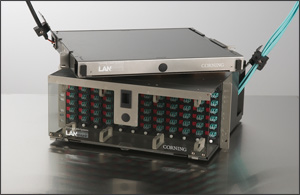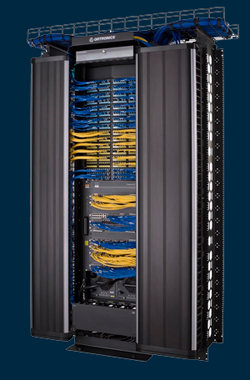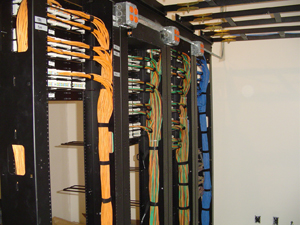Industry Overview
 Telecommunications
Telecommunications
While many believe this industry to have been born out of the divestiture of AT&T in 1984, it can actually be traced to the Carterfone decision of 1968. Basically, a Carterfone was a device that allowed communication between a telephone and a mobile radio system base station. The Federal Communications Commission ruled that the Carterfone and other devices may be connected directly to the AT&T system as long as no damage was caused by these devices. This is the ruling that allowed customer provided equipment (CPE) to be connected to the Public Switched Telephone Network (PSTN).
Com-Bell’s Services
Cabling
Com-Bell Systems primarily installs information transport cabling systems. These cables allow signals to travel to and from Telephones, Computers, Fax Machines, Printers, Wireless Access Points, IP Based Surveillance Cameras to name a few.
Industry Accepted Standards recommend a minimum of two cables to the work area outlet (WAO or Jack). While the cables can be any combination of unshielded, shielded or fiber optic, they are usually unshielded twisted pair, Category 5e or Category 6 rated. All cables are installed from a central room on the same floor or area of the floor and terminated on patch panels or, if desired, wall field termination blocks in the Telecommunications Room (TR) or IDF. This cabling is also referred to the “Horizontal Cabling”. While a WAO should be planned for every 100 square feet of typical office space, the quantity may vary depending on the industry of the customer.
On larger projects where there is more than one TR or building, “Backbone Cabling” would also be required. This type of cabling may consist of multi-pair copper cabling for traditional telephony requirements, fiber optic cabling for data, video and security applications and/or coaxial cabling for CATV and data purposes. Backbone Cabling should be installed with future capacity kept in mind, as it may be very difficult and costly to install later.
With either types of cabling it is very important that the environment the cable is to be installed in is considered in the selection. For example, cable designed for outside plant environments are usually not listed for use indoors and must be transitioned to an indoor rated cable within 50’ feet of the point of entry.
The space cabling is installed is referred to as a “Pathway”. This can be as basic as “J” Hooks installed above a drop ceiling or it can be an elaborate system of wire cable tray and conduit stub-ups
Onsite Service
Com-Bell Systems can provide customers with technicians to assist in their everyday moves adds and changes including telephone cross connecting, telephone instrument moves, network patching, PC breakdowns, PC moves, PC setups.
Telephone Systems
As an authorized Panasonic Business Systems Dealer, Com-Bell Systems can provide customers with a dependable telephone system, voice mail system and telephone sets configured to their specific needs.
Emergency Restoration & Expedited Service
Com-Bell Systems has the resources necessary to help customers recover from outages caused by accidents, construction or acts of nature very quickly. This includes fusion splicing fiber optic cables, splicing copper cables, replacing modules, circuit packs, devices or, if necessary, complete telephone systems. In cases of new installations, we are usually able to respond within 24 hours.
Single Point of Contact
For our customers that have a presence other than Long Island and the New York Tri-State area, our long-term affiliations with manufacturers, distributors and contractors enable us to execute projects with consistent results and adherence to the customer’s standards. Our national customers enjoy the benefit of making one call to handle any of their sites.

